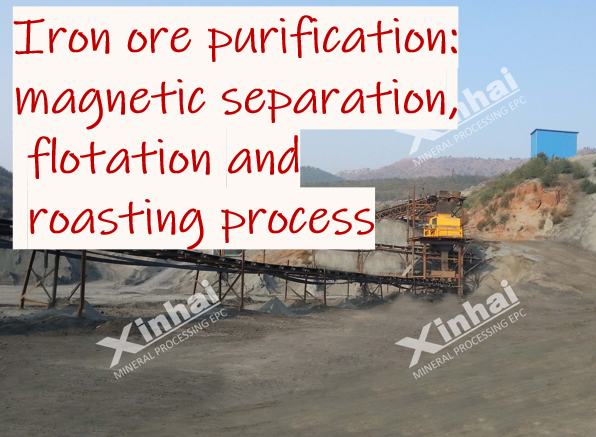Iron ore purification: magnetic separation, flotation and roasting process
2024-09-10 Xinhai (1651)
2024-09-10 Xinhai (1651)
If you have any questions, please contact us through the following ways, we will give you more and better assistance!

Iron ore is an important raw material for the steel industry, and its separation process is crucial to improving the grade and recovery rate of iron ore. With the complexity of ore properties and the reduction of high-quality resources, the traditional single beneficiation process has been difficult to meet production needs. Therefore, the combined application of multiple beneficiation processes has become the development trend of iron ore separation.
This article will introduce several commonly used iron ore separation processes, including one-stage magnetic separation, stage grinding stage weak magnetic separation, dry pre-selection tailings, magnetic flotation combined beneficiation and roasting-magnetic separation process.
The magnetic separation process is the most widely used method in iron ore separation. It uses the magnetic difference between iron minerals and gangue minerals to separate magnetic and non-magnetic components through a magnetic separator. This process is suitable for ores with simple ore properties, coarse crystal size of magnetic minerals and high ore grade.
For iron ores with low ore grade and fine iron mineral embedding, in order to achieve better monomer dissociation and reduce grinding energy consumption, multi-stage grinding and multi-stage separation processes are usually used. This process improves the separation effect by re-grinding and re-selecting the magnetic concentrate.

For iron ores with low iron grade and a large amount of gangue minerals mixed in the crushed ore products, the direct use of grinding-weak magnetic separation process will increase grinding energy consumption and produce a large amount of fine wet tailings. The use of dry pre-selection and waste disposal process to remove gangue minerals before grinding can effectively reduce these problems.
With the reduction of high-quality iron ore resources, many iron ores have low grade, fine embedded particle size, and complex components. It is difficult for a single magnetic separation process to meet production requirements. Therefore, combined processes such as magnetic separation + flotation or gravity separation are widely used. The flotation process of iron ore includes positive flotation and reverse flotation, among which reverse flotation is widely used due to its high efficiency and small impact on the change of ore properties.
For complex and difficult-to-select iron ores mainly composed of hematite, limonite and siderite, the direct use of magnetic separation process is often not ideal. Such ores are usually effectively separated by magnetic roasting-magnetic separation process.
In actual concentrators, due to the differences in the properties of different ores, it is recommended to conduct ore dressing tests before building a concentrator to determine the most suitable ore dressing process to ensure high recovery rate and high grade of iron ore. By continuously optimizing and innovating the ore dressing process, the utilization efficiency of iron ore can be improved to meet the high quality requirements of the steel industry for raw materials.